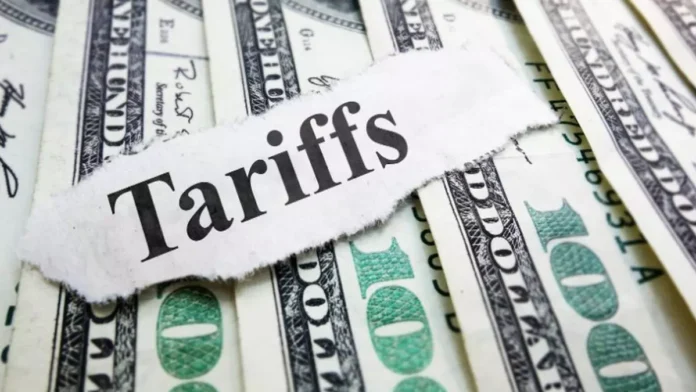In recent months, the trade policies of the United States have been a hotly debated topic, particularly with the new administration’s approach towards tariffs. President Donald Trump’s broad strategy includes the implementation of universal tariffs on all US imports, as well as specific levies on trade partners such as Mexico, Canada, China, and the European Union (EU). This move has sparked both support and criticism, but one thing is certain – it is a significant step towards protecting and strengthening the American economy.
President Trump’s reasoning behind these tariffs is to create a more level playing field for American businesses. Currently, the United States has a trade deficit with many countries, meaning that it imports more goods than it exports. The President believes that this puts American industries at a disadvantage and that imposing tariffs will help to balance the scales. By doing so, he aims to revive domestic production, create jobs, and make the US more self-sufficient.
One of the main targets of Trump’s trade strategy is China. The world’s second-largest economy has been accused of unfair trade practices, such as intellectual property theft and currency manipulation. As a result, the US has imposed tariffs on billions of dollars worth of Chinese goods, with China retaliating with its own tariffs on American products. For years, China has benefited from favorable trade deals, and now this new approach is forcing them to address these long-standing issues.
The President has also levied tariffs on goods from Mexico, Canada, and the EU, citing national security concerns and the need to protect American industries. While these measures have caused some tension and uncertainty in international trade relations, they are ultimately necessary to safeguard the United States’ economic interests. As a country, we must prioritize our own businesses and workforce, and this is exactly what Trump’s tariffs are designed to do.
Some critics argue that these tariffs will lead to higher prices for consumers and could potentially spark a trade war. However, the Trump administration has been careful to target specific industries and products, mitigating the risk of widespread price increases. Furthermore, these tariffs are seen as a negotiating tactic, with the President aiming to secure better trade deals for the US. In fact, we have already seen progress in this area, with revised agreements with Mexico and Canada and ongoing discussions with China.
The impact of these tariffs is already being seen in the US economy. Domestic steel and aluminum production has increased, leading to the reopening of closed factories and the creation of new jobs. The agriculture industry, which has been hit hard by retaliatory tariffs, is also receiving support from the government. The administration has announced a $12 billion aid package for farmers affected by the trade tensions, showing a commitment to protecting American businesses and industries.
Another positive effect of Trump’s trade strategy is the renewed focus on fair trade. For too long, the US has been at a disadvantage due to unfair practices by some of its trading partners. With these tariffs, we are demanding fair and reciprocal trade, which is essential for the long-term health of our economy. This will not only benefit American industries but also our partners as they will be held to the same standards.
In conclusion, President Trump’s universal tariffs and specific levies on trade partners are a bold approach towards reshaping the US economy. While there may be some initial challenges and uncertainties, it is a necessary step towards creating a more balanced and sustainable trade environment. The President’s focus on protecting American businesses and creating a level playing field for trade is commendable and will ultimately benefit the country in the long run. As a nation, we must stand behind these policies and continue to support our government in its efforts to safeguard our economic interests.


